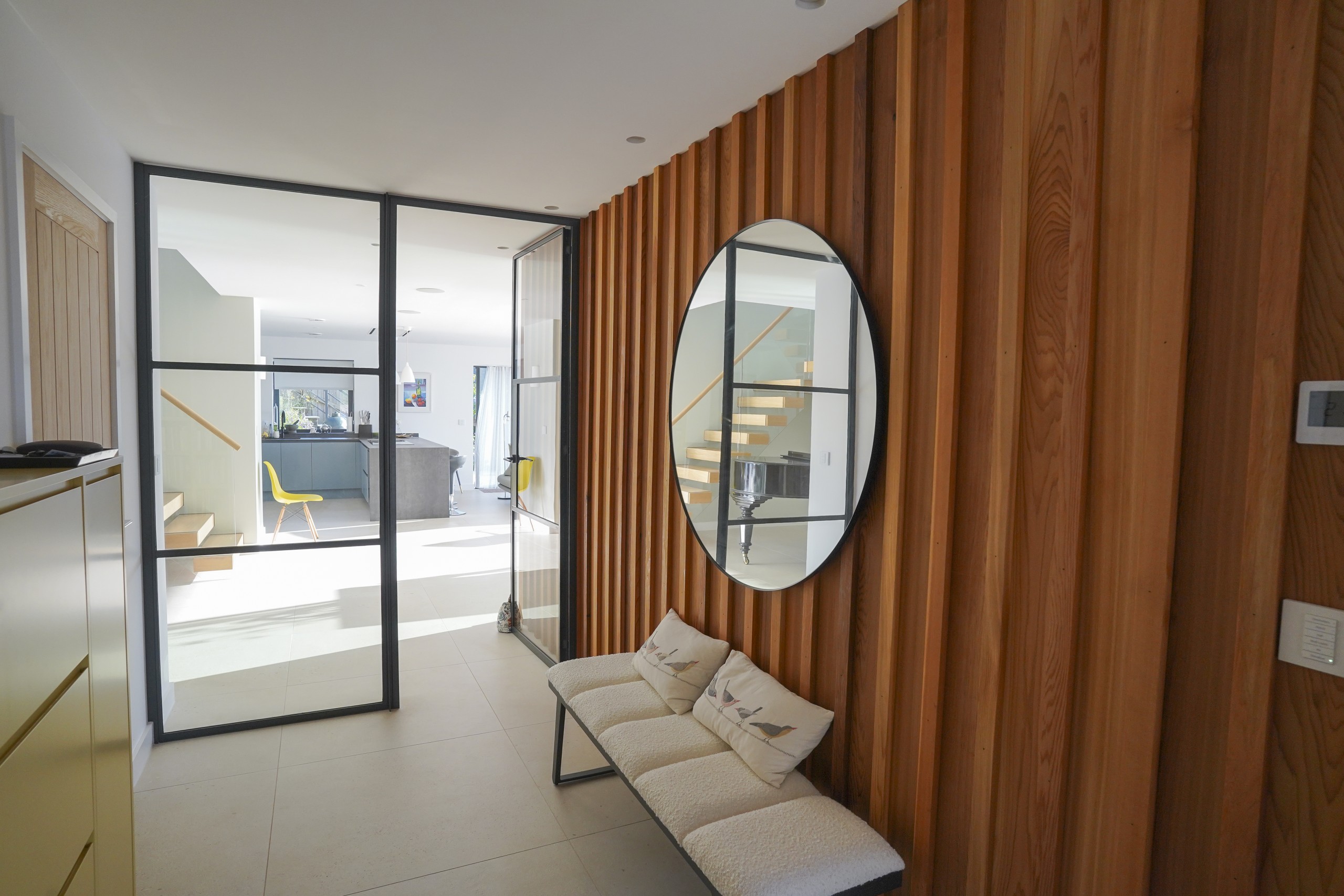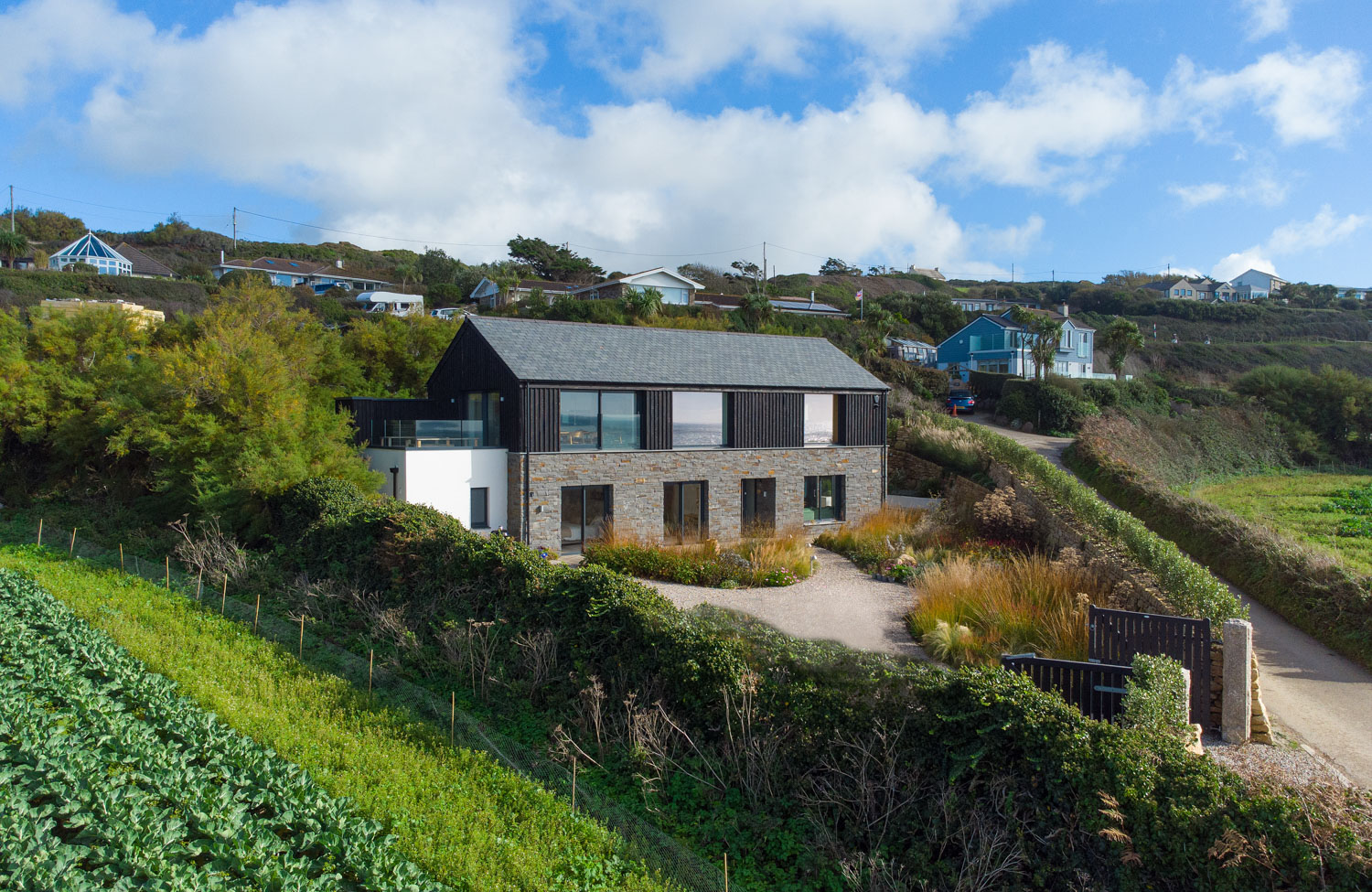What’s my Style – part of the Buzzwords series

The period of (usually) 12 months from practical completion where latent defects, which occur after the completed building or project is handed to the client, should be remedied.
Job titles describing people who are able to design buildings and spaces, and are capable of collaboration with construction trades and specialists to manage projects to completion.
‘Architect’ & ‘Architectural Technologist‘ are legally protected job titles, which can only be used by people who are professionally qualified and registered with a governing body which assesses them to ensure minimum standards and ethics.
A chargeable service provided by the Local Authority or a private company that ensures that buildings are designed and constructed in accordance with the UK Building Regulations and associated legislation. They undertake checks of technical drawings and details and perform on-site inspections of the construction work as it progresses.
At the end of the project, we collate all drawings & specifications by the designers, and product manuals and maintenance regimes, so you know how to utilise all aspects of the building effectively.
It can also be a helpful record for any future owners or tradespeople should alterations need to be made. We often call this the Homeowner’s Manual.
Laws and standards that ensure buildings are safe and comfortable for their occupants and users, by meeting specific standards.
Once we’ve determined your budget and space requirements, we can put together simple plans and 3D models to evaluate how the building(s) and site could look. These can be easily tweaked until the layouts and appearance match your wants and needs.
This is also known as RIBA Stage 2.
The Construction Stage timeline, which we will produce during the Detailed Cost Review. It considers how tasks and trades will interact, overlap or follow each other.
The stage that encompasses all the building work, from off-site fabrication to physically building the property on-site.
This is also known as RIBA Stage 5.
A legal document signed by both the client and the service provider, which sets out the detail of the services to be provided, and any constraints, and how the project should be managed. We typically will use the JCT Design and Build Contract, depending on the service you choose.
Set of construction drawings and information from the Technical Design Stage, agreed to be a true representation of the project, which are used to create the Contract Sum. They are the benchmark for any contract variations that may arise during the Construction Stage.
The expected cost of the build, based on the contract drawings, and the number written into the contract as the cost for the Construction Stage.
Before planning permission is sought, we consider the early scheme’s size, layout, and materials to provide our client with a cost estimate range, by referring to recent construction cost data supplied by ourselves and other contractors to provide lower-middle and higher-middle specifications and finishes.
After the Technical Design Stage has been completed and you are happy with the proposals, we work with our Quantity Surveyor to approach suppliers and subcontractors to provide you with an actual build cost, which leads to a contract sum.
There are a lot of choices to make, and it can get overwhelming. We can draw from our experience of past projects to rationalise the options, or include a cost estimate until inspiration strikes you.
The all-in-one service we provide including everything from architectural services through to the construction stage and completion of your new home. There’s no need to approach anyone else as it’s all handled for you.
Umbrella term for areas such as Areas of Outstanding Natural Beauty, Sites of Special Scientific Interest, national parks, historic & conservation areas, etc.
We take your Concept Design, check & adjust it to meet planning and building regulations, and prepare it for submission to the Local Planning Authority.
This is also known RIBA Stage 3.
As part of RIBA Stage 1, we examine maps, council policies, planning and historical records, and utility registers, which can define a site’s potential development characteristics and constraints.
Following our initial meeting and completion of the Discovery Questionnaire, we will provide you with a record of our discussions and detail your expectations and constraints regarding a project’s space, budget, and time requirements. We will define the services we offer you to achieve your needs, design timescales, and our design stage costs.
We understand that there is a chance that something will get damaged after you’ve lived there for a while. Kids will be kids and pets that look innocent are often to blame. We are on hand to help you, with our project retained information, we hold a list of every model number, paint colour code or item specification you’ll need to replace anything you need.
At the end of construction, once practical completion has been agreed, we provide you with the keys, and you’re free to move in. Latent Defects and other maintenance items are identified and resolved during this stage.
This is also known RIBA Stage 6.
Physical work done by our Bricklayers, Carpenters, Construction Supervisors, Subcontractors, Specialists and any other labour teams, and is distinct from Materials.
These are faults in a property that could not have reasonably been discovered through inspection before completion, which can be dealt with during the Aftercare Period. An example is plaster shrinkage cracks which can appear once the heating has been put on during winter.
A signed letter from the client allowing a service provider like us to proceed with a certain amount of work on their behalf, with a view to a formal contract (cited in the letter) being signed later. This is usually before a budget cost becomes a Contract Sum.
A building (or part of a building) of historic significance, which is nationally registered and protected. Can include old stone gateposts, ancient monuments, and other things you might not expect.
Cornwall Council is the Local Planning Authority for the whole of Cornwall, which determines if planning permissions meet national and local laws and principles. If you live outside Cornwall, or on the Isles of Scilly, your Local Planning Authority will be different.
The overseeing and managing company in charge of discharging the project in accordance with the contract. They must plan, manage, monitor, take account of the health and safety risks to everyone affected by the work (including members of the public), in planning and managing the measures needed to control them. This is our role during the Construction Stage.
Bricks, concrete, timber, cement, nails, screws, and everything else that makes up the building.
An area that has been designated for conservation due to significant landscape value (rebranded from AONB to National Landscapes in 2023).
Anyone who resides near to a project or can pass by and can be affected in any way by the project, for example walkers on a track which runs along the boundary of the construction site.
Confirmation from the Local Planning Authority (council) that the development will meet laws and principles to maintain or enhance the visual, environmental and social aspects of the local area, covering all the aspects of how people will use the building.
The Local Planning Authority’s appraisal prior to granting Planning Permission typically takes 8 weeks, and your neighbours are invited to comment, so early engagement with them is valuable. Alongside the drawings, we submit written documents and consultant reports to support the request.
The point at which the building or project can be handed over to the client. This signals the end of the Construction Stage (RIBA Stage 5), and any partial retention payments are due. It is commonly the point where the Main Contractor will no longer insure the building, and the client’s usual building insurance will resume or commence.
If your site is located within an area with significant landscape or historic value, or your building is listed, we can submit the Concept Design to the Local Planning Authority for initial evaluation. Their feedback will determine the criteria to be assessed and confirm which consultant’s reports are necessary for a later planning application, if required.
This describes the project and the aspects you’d like to include, such as alterations or removal of existing structures, number & type of rooms to be created, budget and timescales. This is a very early document in the whole process.
A tree or group of trees that are protected due to their type, age, size, location, historical significance or value to local communities. Also covers trees in conservation areas.
Handles cost reconciliation during a project. They also provide valuations to the client at monthly intervals and handle any variations to the contract. They are integral to the Construction Stage of a project and a useful person for both us and our client.
The Royal Institute of British Architects. A global professional membership body for architects.
Offers clients, designers, and contractors an industry-wide procedure for establishing a project brief, designing a scheme that meets all the criteria, undertaking the construction whilst ensuring compliance with the original brief, and maintaining the resulting development. Each step of the process can be described as a Work Stage.
A procedure to identify, record, communicate and reduce any risks that may be present on a construction site. Often these can be job specific.
A document that outlines the work that needs to be completed in a given project. A Schedule of Works typically provides an overview of the works without delving into the nitty-gritty of every task.
An area that has been recognised for its special flora, fauna or geology, representing national heritage or a unique habitat.
This is a term used to describe the quality control period at the end of a construction project, that aims to check for and remedy any outstanding defects which are present before the project is handed over to the client. Sometimes known as Patent Defects.
A catch-all word used to describe the detail of construction elements required to satisfy Building Control, specific details of finishes (for example floor tiles or paint colours and textures), and even what bathroom sanitaryware has been selected. It is an important record that ensures the construction proceeds in the correct way and the correct client-preferred items are installed.
Person or business employed by the Main Contractor to provide a service or advice on the project. Subcontractors must follow the same safety and general site rules on-site as everyone else, but must have their own insurance and job-specific risk assessments.
Follows Developed Design. Collaborating with other consultants, we begin by drawing and specifying the aspects of a project to demonstrate compliance with Building Regulations. Following that, we define the finishes, fittings and all other aspects that will determine the overall project costs and the construction programme.
This is also known as RIBA Stage 4.
Drawings, specifications and information created during the Technical Design Stage.
Once the Construction Stage is underway, you may decide to make a change, or a (rare) unforeseen condition requires that a change is needed. This is called a variation and is normal within a standard building contract.
We evaluate the views outward and into your site, ensuring we take full opportunity of the vistas whilst maintaining privacy for you and your neighbours, and design a scheme that fits the local landscape.
Also known as Construction Drawings, these are the final Technical Drawings ready for use to build, and can be updated throughout the Construction Stage.


This site uses cookies to offer you a better browsing experience.